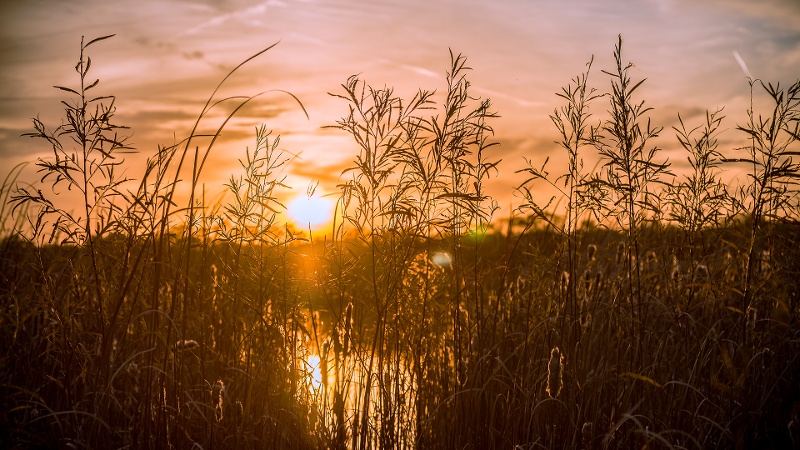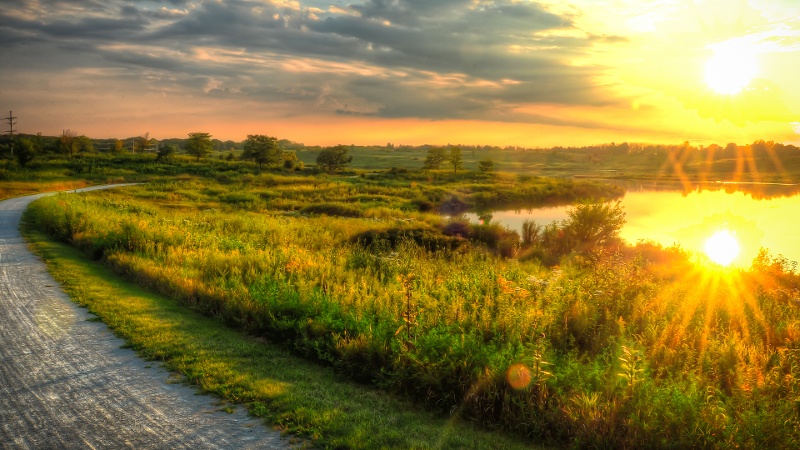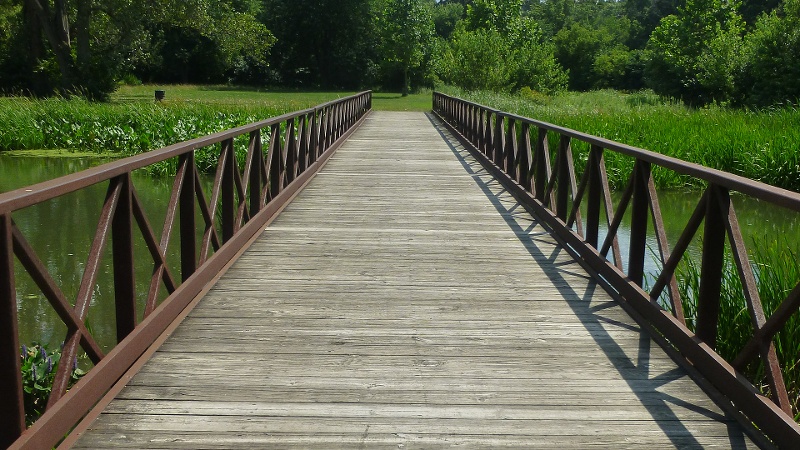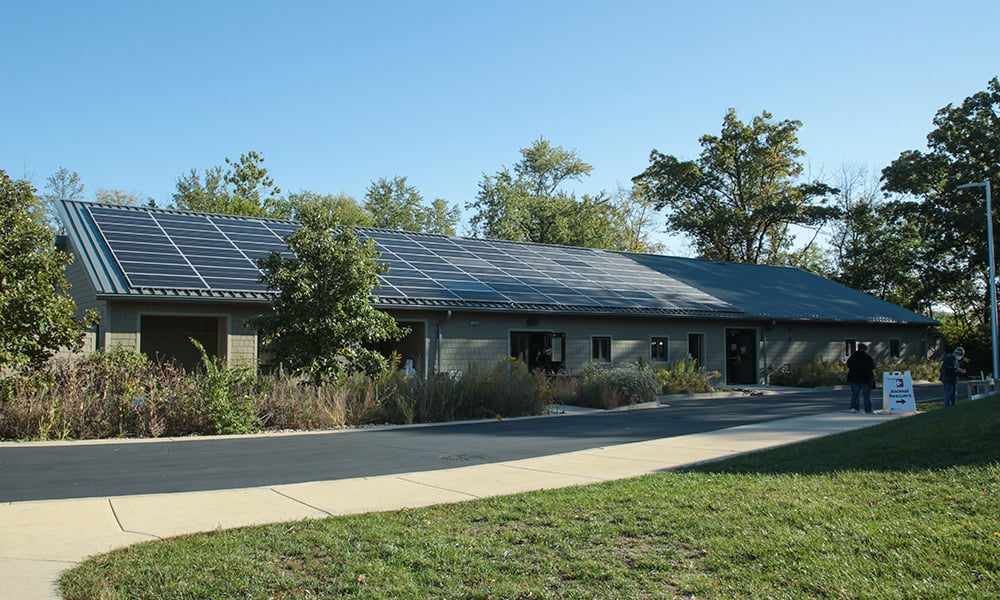
DuPage Wildlife Conservation Center
The DuPage Wildlife Conservation Center provides care and medical treatment to injured, orphaned, and sick native wild animals.
The visitor center and access to the trails from Park Boulevard are closed while a new center is being constructed, but the animal admittance area remains open. See the hours information below. Learn More
Maps
Hours
The visitor center and access to the trails from Park Boulevard are closed while a new center is being constructed, but the animal admittance area is open 9 a.m. – 4 p.m. Thursday – Tuesday and 9 a.m. – noon Wednesdays. It accepts most wildlife patients, but please call 630-942-6200 first before coming. The admittance area is closed on Thanksgiving, the day after Thanksgiving, Christmas Eve, Christmas Day, and New Year's Day.
Because we moved our resident animals from the exhibit trail to their new homes behind the scenes, the outdoor exhibit trail is permanently closed. (Don’t worry. The animals are still getting daily, high-quality care but in a less stressful environment.)
General Info
Dogs are not allowed at the center or surrounding forest preserve. Alcohol is prohibited. Read our complete rules and regulations.
Contact Us
Wildlife Rescue Advice
If you find a wild animal exhibiting signs it needs help, first call the DuPage Wildlife Conservation Center at 630-942-6200 to determine if the animal truly needs assistance. Recordings provide after-hours guidance, and additional information is available on this webpage.
If you see an injured animal in a DuPage forest preserve or notice a situation that could harm wildlife, use our Citizen Reporter to share details and photos. This online tool helps staff locate and assess injured animals and other concerns within the preserves. The Forest Preserve District does not pick up animals on private property.
The center may have species-specific admission criteria. If an animal doesn’t meet those criteria and cannot be treated at the center, staff can help rescuers or other agencies connect with licensed wildlife rehabilitators.
- Obvious bleeding
- Obvious fracture
- Severe head tilt
- Swollen, crusty and red eyes or obvious eye injury
- Animal is rolling or circling
- Adult animal is unable to stand
- Featherless or mostly featherless bird on the ground
- Obvious maggots or parasites
- It's a baby waterfowl, such as a gosling or duckling, or a baby Virginia opossum
- Skunks, bats, deer, trapped nuisance animals, or (beginning Nov. 15, 2023) raccoons. (See our intake guideline changes FAQ for more information.)
- Nonnative animals, including European starlings, house sparrows, pigeons and red-eared sliders
- Native wildlife raised as pets (efforts to reverse any taming or imprinting are unsuccessful)
Find out what do you do if you come across these wild baby species.
Never handle an adult animal without first consulting a wildlife professional. Even small animals can injure you!
Once you've contacted a wildlife rehabilitator who can help, describe the animal and its physical condition as accurately as possible. Wear thick leather gloves and long sleeves when handling wildlife or gently use a tool — such as a broom or shovel, when possible — to move the animal. Cover the animal with a heavy towel to help avoid contact and keep the animal calm.
- Put the animal in a secure and safe container with good air flow. Shoe boxes, pet carriers, plastic food containers or cardboard boxes work well. Securely fasten the lid with duct tape.
• For baby birds, line the bottom of the container with a towel to absorb
waste products and provide secure footing and insulation. Add a plastic
cup with tissue as an artificial nest for songbirds or raptors.
• For baby mammals, place a towel inside the container so the animals have a place to hide.
• For adult animals, line the bottom of the container with a towel to absorb waste products, and cover the container with a large towel for darkness. - Do not give the animal anything to eat or drink. It can choke or swallow improperly, leading to aspiration pneumonia. Babies are only fed by their parents; adults don't eat when scared and can be dangerous to approach. Most wild animals will not drink water from a cup, and leaving a water bowl with a young or debilitated animal could result in it drowning or a drop in its body temperature.
- Place the container in a warm, dark and quiet place — away from pets, children and all noise (including TV and radio) — until you transport the animal. Keep the container away from direct sunlight, air conditioning and heat.
- Transport the animal as soon as you are able. Leave the radio off and keep talking to a minimum. Keep the animal's space dark and quiet to limit its stress and help keep it alive.
- Do not peek at, talk to or interact with the animal in any way.
Trapping and removing an animal is not always the solution to the problem. Removing the animal is illegal without the proper permits and only creates an open space for another animal to inhabit. A trapped adult may also leave young behind to die of starvation. Focus on removing the attraction, not the animal.
Never move young from a den.
Never use poisons. They're inhumane and may be illegal. They can also result in secondary poisoning of other wild animals or pets.
It's illegal to keep wild animals, even for a short time. They have special nutritional, housing and handling needs, and inexperienced individuals who try to raise or treat them inevitably produce unhealthy, tame animals that can't survive in the wild.
This section provides problem-solving advice and ways you can make your yard and home less attractive to wild animals.
Bats
Beavers
Chipmunks & Ground Squirrels
Coyotes
Eastern Cottontails
Mallards & Geese
Opossums
Raccoons
Skunks
Songbirds
Tree Squirrels
White-Tailed Deer
Woodchucks
Woodpeckers
Donations are always appreciated at the DuPage Wildlife Conservation Center, especially during the busy baby season between March and August.
If you drop off a wish list item in person, please make sure to sign the donation log so we can send you a thank you and tax receipt.
If you send a gift through Amazon, please make sure we have your name and address so we can send you a thank you and tax receipt.
Get Involved
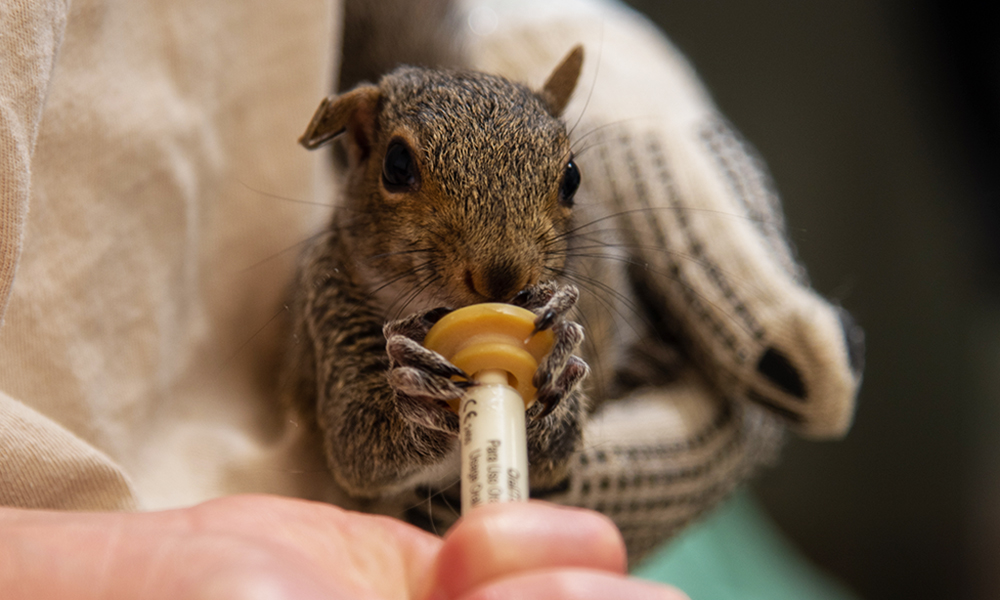
Volunteer
Help our staff care for and rehabilitate native wildlife and educate visitors about living in harmony with wild animals.
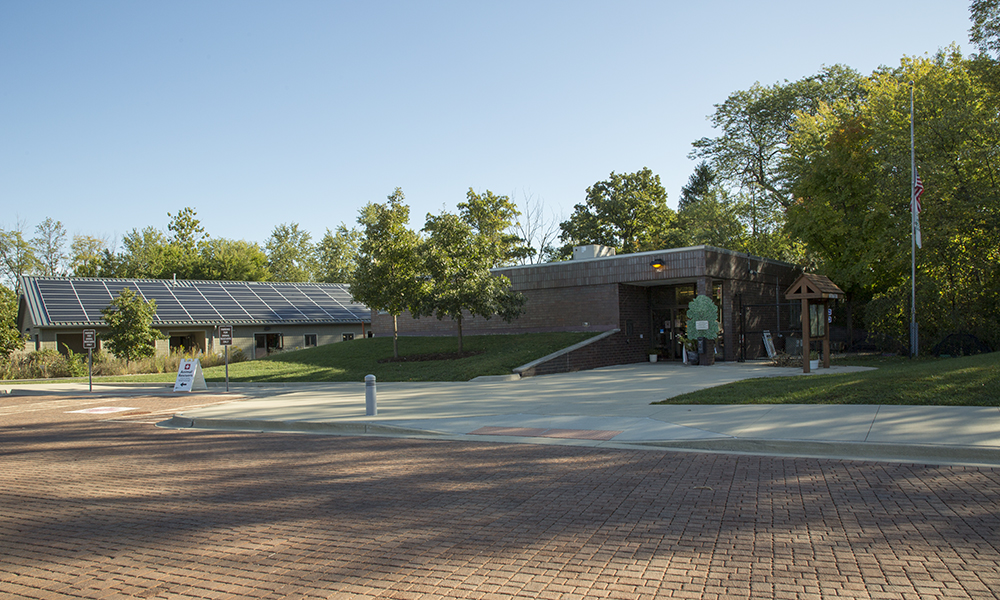
Donate
Your generosity supports the medical treatment and rehabilitation for more than 9,000 animals each year.
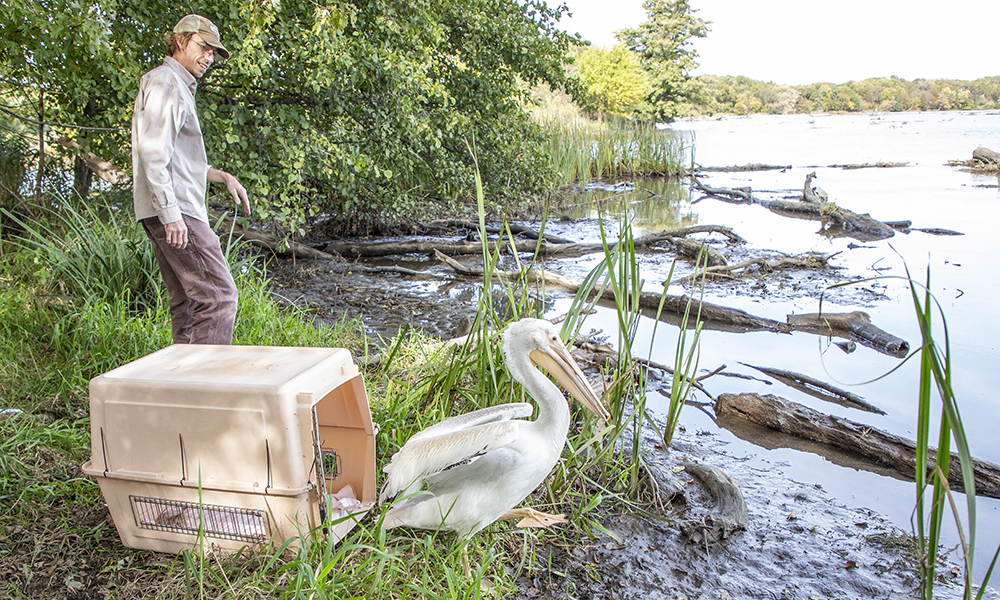
Be Our Community Partner
As a Friends community partner, you can help us connect people to nature in DuPage forest preserves.
